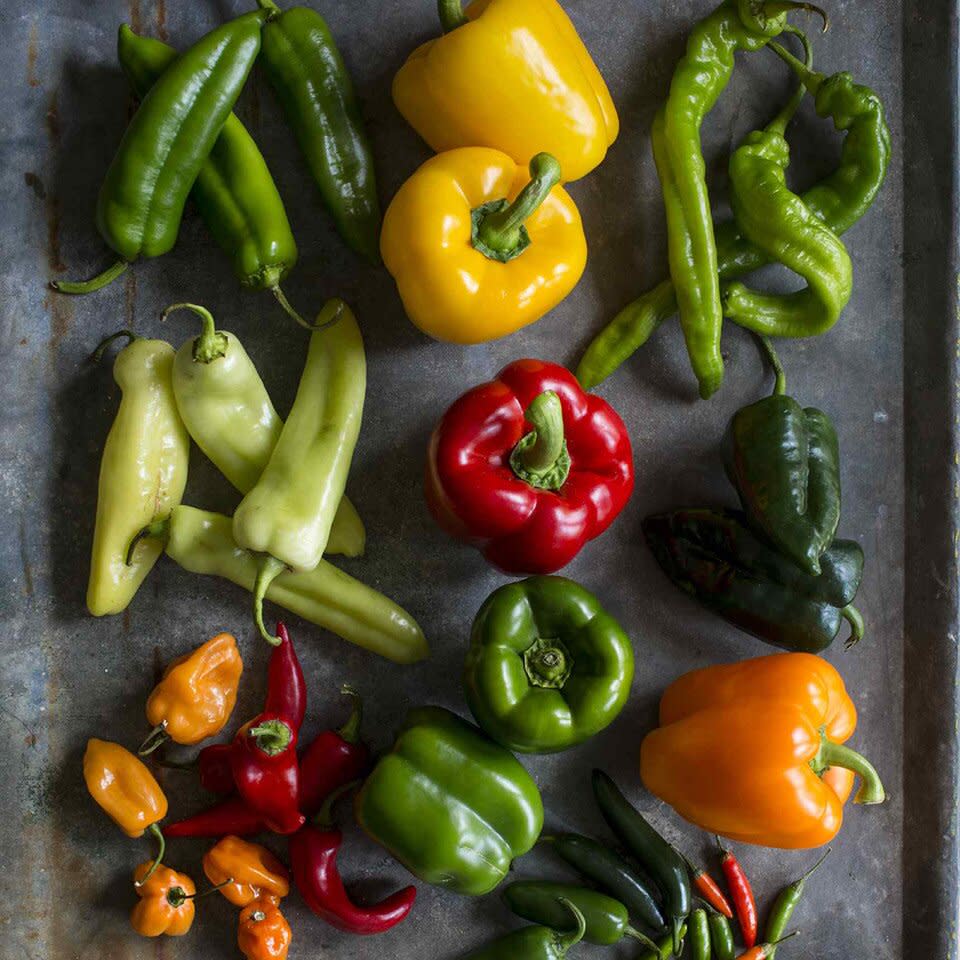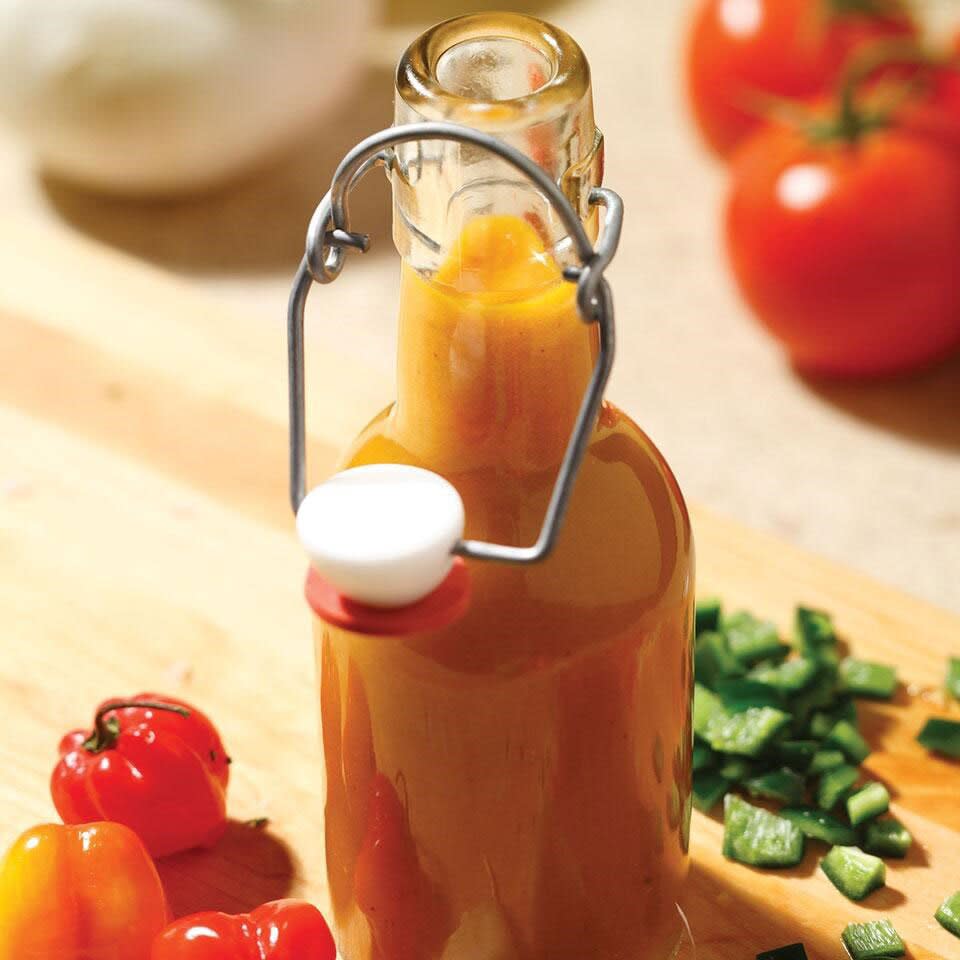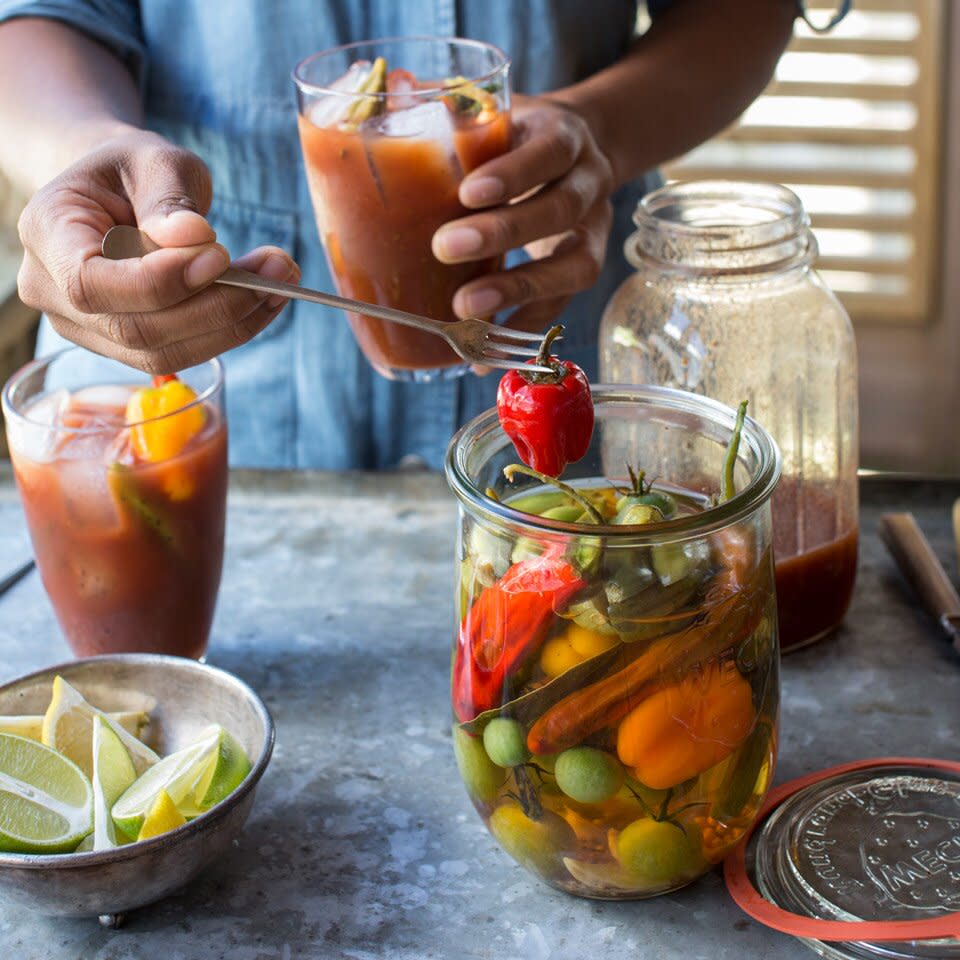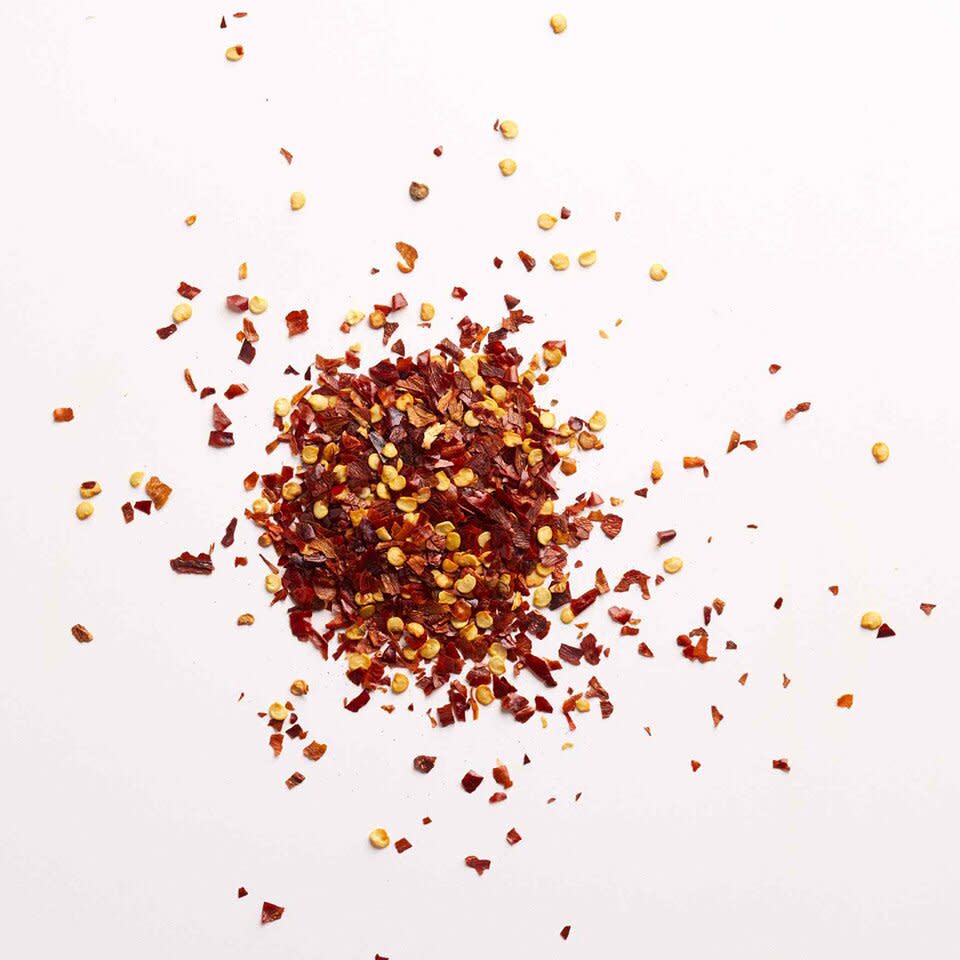The Best Way to Preserve Hot Peppers

Shown: Varieties of sweet and hot peppers.
Hot peppers are great to have on hand, but if you've ever grown them yourself, you may have found that too much of a good thing can be a bit of a problem. What do you do with tons of hot peppers when you can only enjoy a few at a time? Well, I'm here to tell you: this is a good problem to have. Hot peppers are easy to preserve and enjoy long after the peak growing season is past. Check out my favorite ways to preserve and enjoy hot peppers below.
Just one word of caution before you begin: We highly recommend wearing gloves when handling hot peppers! The oils that irritate your skin can be difficult to wash away with just soap and water.
1. Make Your Own Hot Sauce

Pictured Recipe: Homemade Hot Sauce
Hot sauce adds kick to just about everything it touches, which is why we love it. Most people turn to the bottled stuff when they want to jazz up their meal, but making it yourself if super-easy and it makes a great gift for the spice lovers in your life. If you've got onions, tomatoes and garlic along with your peppers, then you've got hot sauce!
Just sauté 1 cup chopped onion and 4 cloves minced garlic along with 2 chopped large mild-hot peppers (think poblanos, New Mexico or Anaheim chiles) and 2-4 minced small hot peppers (like habaneros, serranos or jalapeños) until they're just beginning to color. Then add 1 pound chopped tomatoes, 1 cup white vinegar, 2 teaspoons salt and 1-3 teaspoons sugar to balance out the flavor.
Simmer it all together until the tomatoes are breaking down. Then puree until smooth in a blender or food processor (always use caution when blending hot liquids, and work in batches if there is too much volume for your machine). Then pour and press the mixture through a fine-meshed sieve, let cool and voilà! You've got hot sauce. Serve it up for taco night or add a dash or two to your favorite grilled meat, such as chicken or steak.
The hot sauce will keep in the refrigerator, covered, for up to 1 month or in the freezer in an airtight container for up to 6 months.
2. Pickle Them!

Pickling is a great way to make a bumper crop of hot peppers last. And, like hot sauce, a jar of pickled peppers makes a great gift. You can use them in drinks, chop them up on tacos, or garnish salads and sandwiches with them. Any hot pepper will work. I like pickled jalapeños for their nice even heat. Feel free to experiment with your own favorites or try a mix.
Just halve or slice your peppers (don't forget those gloves!) and drop them into a pot of boiling water for 2 minutes to soften them up. You'll want to have an ice bath set up nearby to transfer them into when the 2 minutes is up. From the ice bath, transfer the peppers to a glass jar or other nonreactive container. Boil water and vinegar (white vinegar or cider vinegar works well) using a one-to-one ratio. Flavor the brine with sea salt and sugar to balance the flavor; boil for 2 minutes. Pour over the peppers, cover and keep refrigerated for up to a month.
Related: How to Pickle Anything (No Canning Necessary)
3. DIY Red Pepper Flakes

Homemade chili flakes are easy to make if you have a dehydrator or an oven and a little patience. Dehydrators work best because they circulate the air and keep the temperatures low enough to dry the peppers and not actually cook them. An oven will work too, as long as you keep an eye on it and set the oven temperature as low as it can go (which for many is around 200°F).
Cut the peppers uniformly so they dry at the same rate. You can keep the seeds inside-they add heat! Then spread out on a baking sheet lined with parchment and "bake" until they're dry and brittle. If they look like they're cooking and not drying, you may have to prop open the oven door once in a while. Depending on how thick your peppers are, this should take you 1 to 3 hours. Let them cool, then place them in a plastic bag and smash them into flakes.
Red, yellow or orange peppers are good choices here since they hold their color. Green peppers will dry, but will turn a muddy brown. Habenero (for those who really like heat!), Thai chiles or red serrano peppers are all good choices. If you want to include a few different types of peppers in your mix go for it, but keep in mind you may have to dehydrate them separately if they're different sizes or thicknesses.
4. Char & Freeze
Yes, you can freeze hot peppers and they retain their heat just fine. They are actually great candidates for freezing because they keep their color without the added step of needing to be blanched first, unlike many other (mostly green) vegetables. However, instead of just popping them into the freezer as is, try charring them first. You can do this using the grill, an open flame on a gas stove or under the broiler. Cook them just until their skins begin to blacken and blister, turning to char all sides. Let them cool in a bowl covered with a clean kitchen towel. This will help loosen their skins. Then gently peel the skin away, remove the seeds, bag and freeze to add to soups, salsas, scrambled eggs, tacos and more. The result is tender, sweet peppers with just a hint of smoke.

